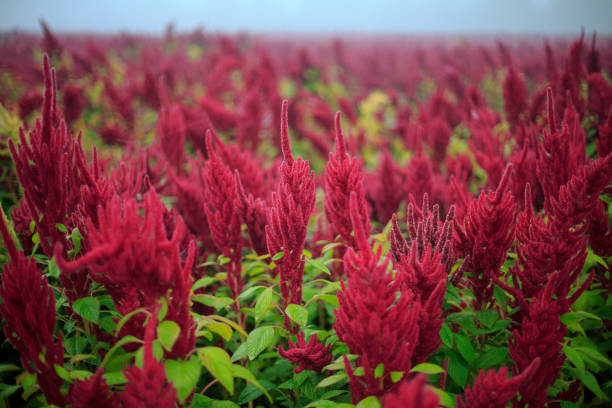Share This
Most of us are used to going to the grocery store to buy our grains, but have you ever wondered if you could grow your own grains at home? Whether you have a small space to grow in the city or have a spacious garden in the suburbs, amaranth is a garden-friendly whole grain traditional to the Americas and the perfect choice for planting. Known as kiwicha in Peru and huahtli in Mexico and Guatemala, amaranth is a surprisingly easy grain to grow, with the plant yielding both edible seeds and greens. Amaranth has been grown as a food crop for 6,000 years, and we’re here to offer pointers and outline some of the benefits of bringing this legacy plant into your own garden. We spoke with Zoe Mackey, the General and Grower Coordinator at Q Gardens in Brooklyn, New York about growing amaranth.
Amaranth is a self-sowing, hearty pseudo-grain that thrives in full sun. While not technically a perennial, once an amaranth patch has been planted, this prolific plant produces tons of seeds (the grain) that will grow in the same area year after year. Q Gardens grows both red amaranth varieties (like the prince’s feather, love lies bleeding, and roadale red) and green amaranth. Some varieties of amaranth are grown as ornamental plants, so it makes sense when Zoe comments that “the red amaranth flowers are so beautiful” amongst the other food crops. Both red and green varieties can be grown to save the seed as a delicious pseudo-grain, and for use of the greens—amaranth provides one of the greens commonly referred to as callaloo in Caribbean nations.
Zoe advises that amaranth-curious gardeners can sow the seeds loosely covered directly in soil, with regular watering. Amaranth is a low effort addition to the garden that is extremely hardy, drought resistant, and able to thrive in soil that many other food crops struggle in. Those impressive qualities are what led amaranth to become a staple food of the Aztecs, and to be a plant still commonly grown today.
It is also a beneficial companion crop for other plants. Zoe and her fellow gardeners grow amaranth alongside fava beans, okra, and tomatoes because of the beneficial cover amaranth provides to low growing and crawling crops. Beyond those three, amaranth is also a traditional companion for tubers, squashes, and other nightshades due to its root structure promoting loose clumping in the soil. Zoe cautions gardeners to “be careful with amaranth overcrowding and creeping into other plants’ territories,” as its hardy nature also makes it prone to spread. If you make your own compost, be sure to compost the flowers after harvesting the seeds or only compost the leaves to prevent amaranth from growing where you don’t want it.
When your amaranth seeds are ready for harvest, cut the flower with some stalk remaining and let them completely dry out, either by hang drying or lay drying. Once the flowers are dry, gently shake out the plant into a large bowl or strainer. The seeds should come out easily, with barely any effort beyond shaking. Use the saved amaranth grain in one of our delicious recipes and save some seeds for next year’s garden! Stay tuned for the end of the growing season, when we’ll show a full tutorial on amaranth harvest and seed saving.
Have you ever grown amaranth in the garden? Share your tips in the comments! (Vik)
To have our Oldways Whole Grains Council blog posts (and more whole grain bonus content!) delivered to your inbox, sign up for our monthly email newsletter, called Just Ask for Whole Grains.



Comments
Add a Comment